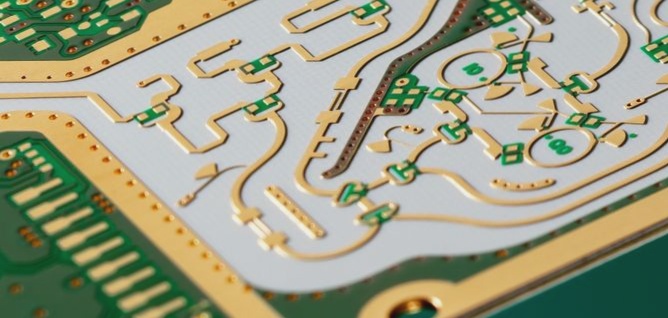The usual circuit board is marked with +- signs on or near the two pads of the capacitor. The actual color of the circuit board is white, which means that the pin on the side with the white face is negative.
The names of various circuit boards include ceramic circuit boards, alumina ceramic circuit boards, aluminum nitride ceramic circuit boards, PCB boards, aluminum substrates, high-frequency boards, thick copper boards, impedance boards, ultra-thin circuit boards, printed circuit boards, etc.
Circuit Board Classification:
A. Classification based on the number of circuit layers:
The most basic PCB has components on one side and wires on the other side. When the wires are only on one side, it is called a single panel.
For circuit boards with wiring on both sides, there must be a proper circuit connection between the two sides.
1. Multi-layer boards use single or double-sided wiring boards to increase the wiring area. By combining layers, they can form four-layer and six-layer printed circuit boards, also known as multilayer printed circuit boards.
2. The number of layers on the board indicates the independent wiring layers. Most motherboards have a structure with 4 to 8 layers.
B. Classification based on flexibility:
Circuit boards are divided into ordinary circuit boards and flexible PCBs.
Ordinary circuit boards usually have +- signs near the capacitor pads, indicating the positive and negative sides. The square pad is commonly the first pin, but it doesn’t guarantee it is the positive electrode. The color of the electrolytic capacitors on the circuit board is often white, where the pin on the white side is the negative electrode.
Remember, square pads represent the negative pole, while round pads denote the positive pole. This polarity rule can also apply to other capacitors on the same circuit board.
The names of various circuit boards include ceramic circuit boards, alumina ceramic circuit boards, aluminum nitride ceramic circuit boards, PCB boards, aluminum substrates, high-frequency boards, thick copper boards, impedance boards, ultra-thin circuit boards, printed circuit boards, etc.
Circuit Board Classification:
A. Classification based on the number of circuit layers:
The most basic PCB has components on one side and wires on the other side. When the wires are only on one side, it is called a single panel.
For circuit boards with wiring on both sides, there must be a proper circuit connection between the two sides.
1. Multi-layer boards use single or double-sided wiring boards to increase the wiring area. By combining layers, they can form four-layer and six-layer printed circuit boards, also known as multilayer printed circuit boards.
2. The number of layers on the board indicates the independent wiring layers. Most motherboards have a structure with 4 to 8 layers.
B. Classification based on flexibility:
Circuit boards are divided into ordinary circuit boards and flexible PCBs.
Ordinary circuit boards usually have +- signs near the capacitor pads, indicating the positive and negative sides. The square pad is commonly the first pin, but it doesn’t guarantee it is the positive electrode. The color of the electrolytic capacitors on the circuit board is often white, where the pin on the white side is the negative electrode.
Remember, square pads represent the negative pole, while round pads denote the positive pole. This polarity rule can also apply to other capacitors on the same circuit board.


